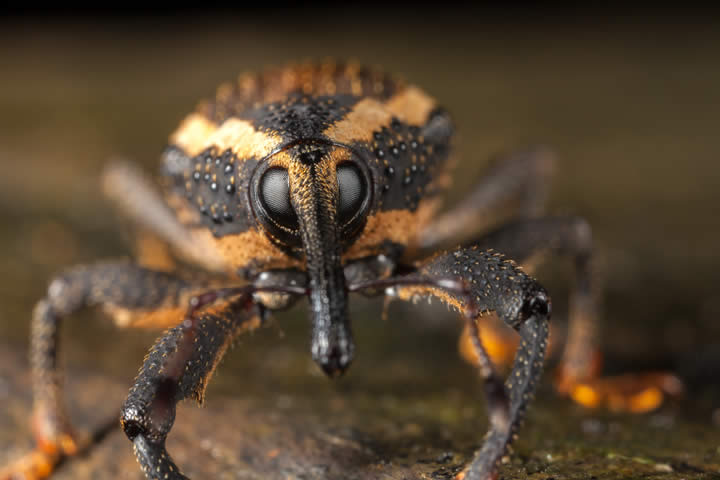Blog
What’s lurking in the cupboards? Common stored product pests and how to get rid of them
Pests that are typically found inside cupboards in dry, stored food are commonly known by the term “stored product insects” or “stored product pests”.
They vary in size, shape and colour, but all have one thing in common – they are tiny, infest, mate inside of and feed on dry stored food resulting in monetary loss, food spoilage and an infestation; potentially devastating to industries such as restaurants, retail and manufacturing.
In an office environment, people often keep their cereal, coffee, powdered milk, crackers, chocolate and snacks inside their drawers and on desks. This could potentially lead to annoying pests getting inside and causing an infestation.
There are many types of stored product pests; however, these are the most common types:
Flour Beetles
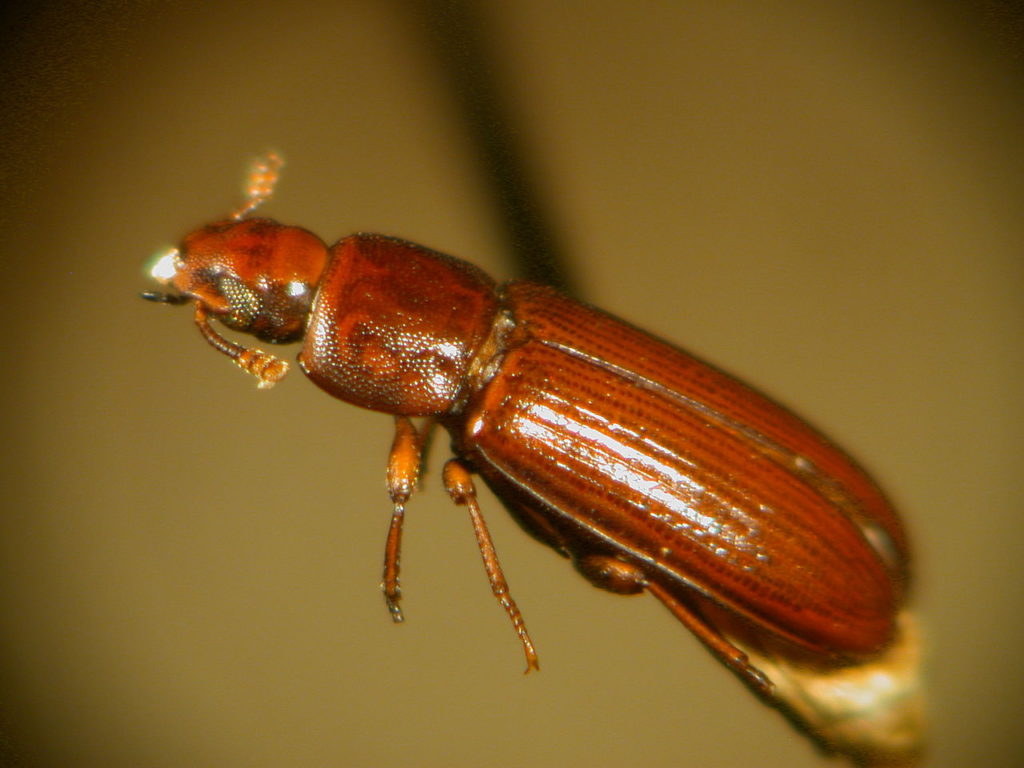
Photo credit: Wikipedia
(Tribolium confusum and T. castaneum) are reddish-brown in colour and oval in shape. They can grow up to 6.35 millimeters long and have two small pointed spines on the tail end.
There are two species of flour beetles; the red flour beetle and the confused flour beetle, which are common in homes and offices and the confused flour beetle is a frequent pest in flour mills.
Flour beetles infest many types of dried food products, such as:
- flour
- bran
- cereal products
- dried fruits
- nuts
- chocolate
Sawtoothed Grain Beetles

Photo credit: Tom Murray
(Oryzaephilus surinamensis) are small, slender, flattened, and brownish-red to almost black in color. They are easily identified by the saw-like teeth on each side of the thorax.
Sawtoothed grain beetles are notorious for entering packages of food through the smallest of openings and feed many different items, including:
- dried fruit
- cereals
- nuts
- biltong
- pasta
- seeds
Tobacco Beetles
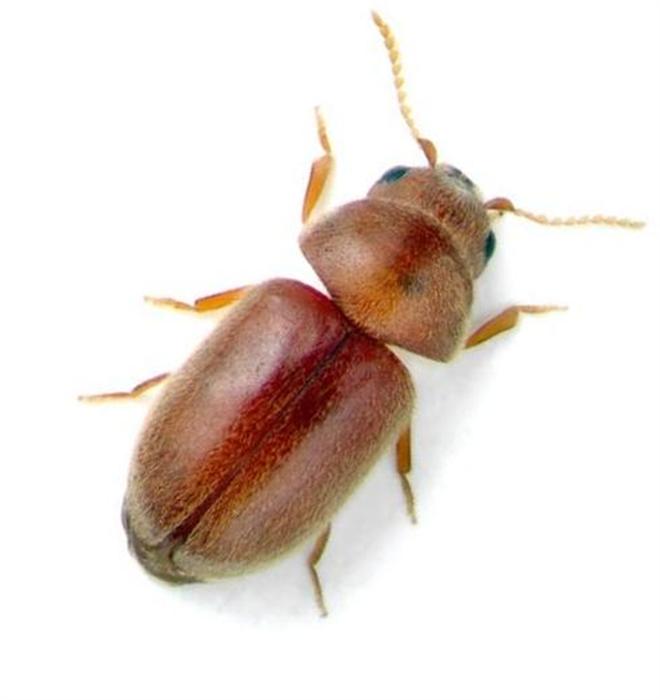
Photo credit: www.cigarettebeetle.com
(Lasioderma serricorne) also commonly known as cigar beetles or cigarette beetles are 2-3 millimeters long, oval, and brown in colour.
This tiny beetle appears to have a slightly humped appearance with uniformly serrated antennae of 11 segments. This species flies and can be found around windows.
Tabacco beetles feed on a wide variety of dried products such as:
- spices
- grain based foods (pasta, rice, etc)
- dried flowers
- cereal
- flour
- tobacco products
- paper products, including books
Indian meal Moths
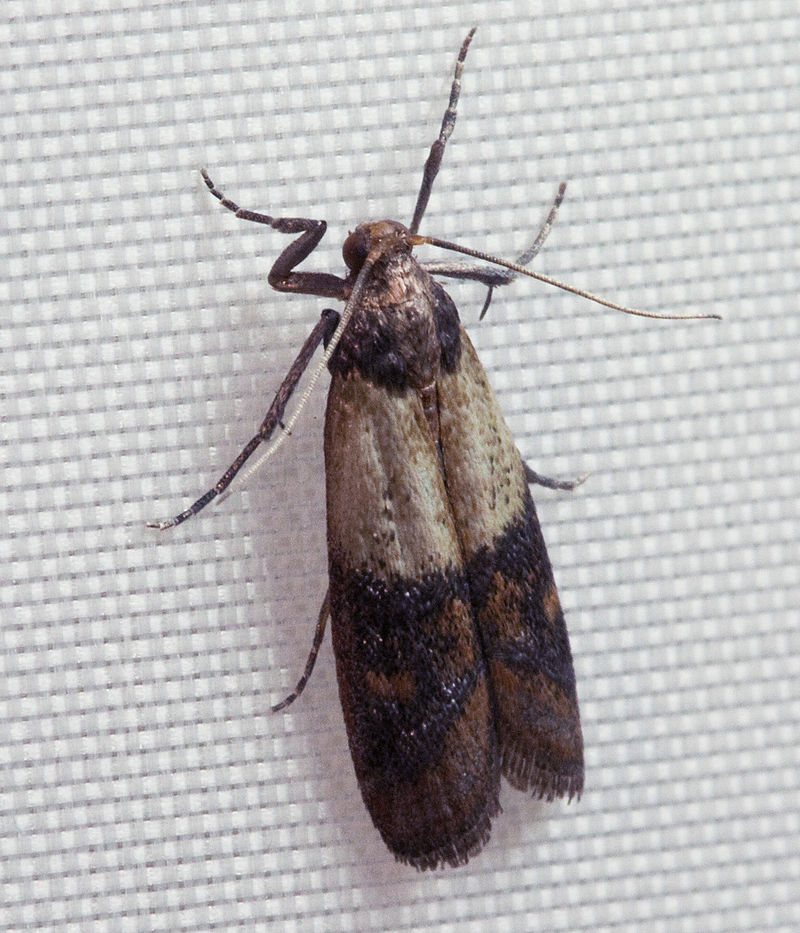
Photo credit: Wikipedia
(Pyralis farinalis) have a wingspan of about 2.5 cm. Their forewings have a dark reddish brown band across the top and bottom of the wings with an olive or yellowish green band, outlined by wavy white lines in the center.
Their abdomen is typically curved up at a 90° angle when at rest.
Indian meal moths feed on a wide variety of products, such as:
- flour
- grain products
- cereal
- powdered milk and cremora
- seeds (especially when they are damp)
Proper food storage to prevent pests
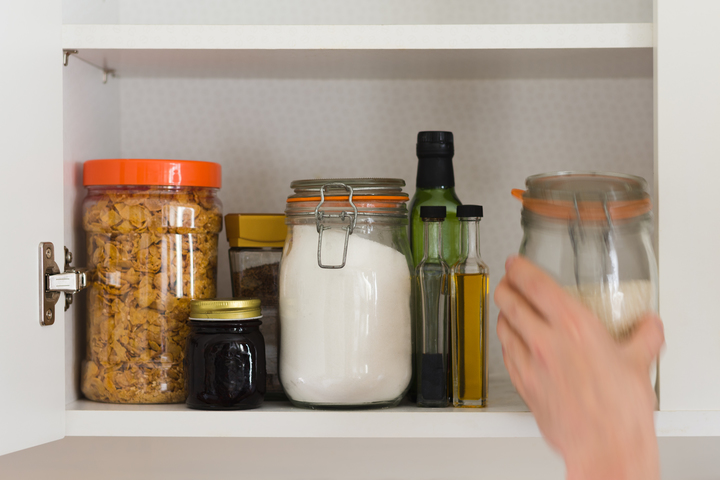
If your office workers and staff don’t store their dry food correctly, then there is a chance that you may be facing an infestation sooner or later.
Dry food products should be stored inside clean kitchen cupboards in food-safe plastic or glass containers with air-tight lids. The emphasis is on the air-tight lids, which will prevent pests from getting inside, and if they do, this works well as a containment measure.
If dry food products are kept inside of desk drawers, they should always follow the same rules, and either be kept inside a plastic container with an air-tight lid or a Ziploc plastic bag.
If you find contaminated food, immediately dispose of the food in a sealed bag and disinfect the area. Another great prevention tip is to dispose of the container where the infestation or pests were found.
Use specialized pesticides to treat infested areas. However, we would highly recommend that you use a professional pest control service to ensure the source is found and an infestation is completely eliminated throughout the building.
If you think your office may have a pest problem, then contact us today and we will determine the best solution for you.


